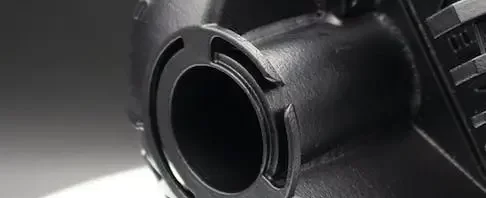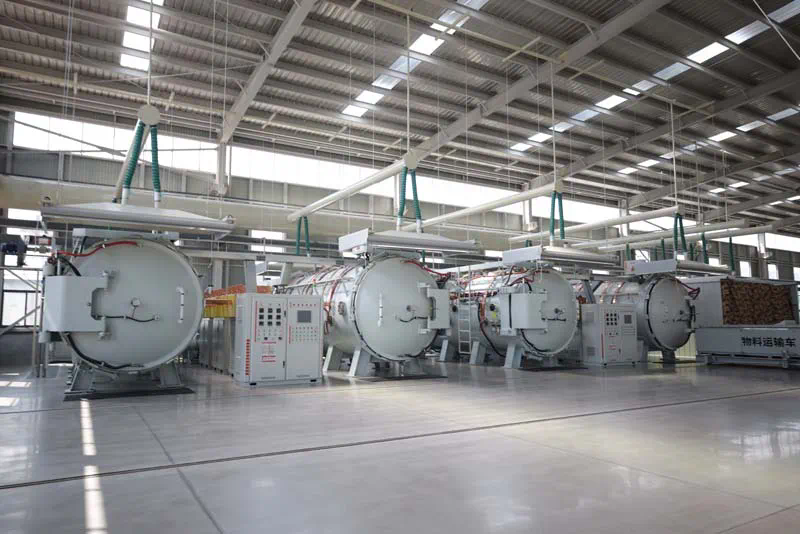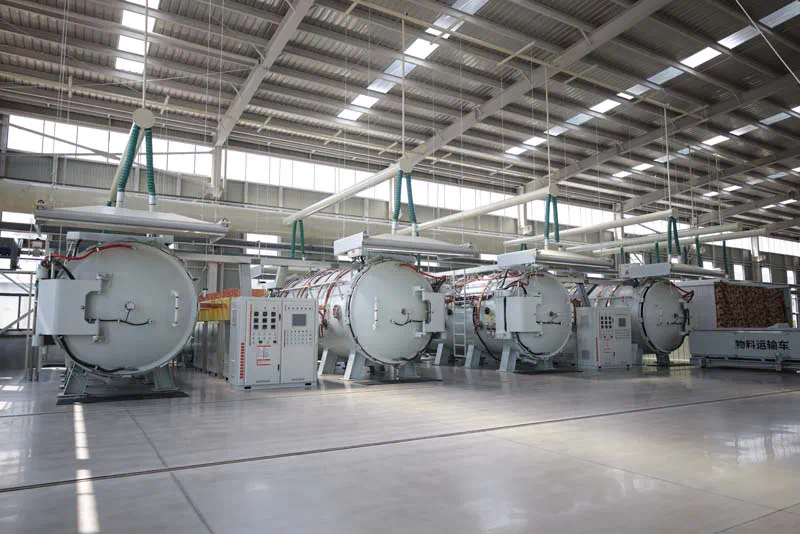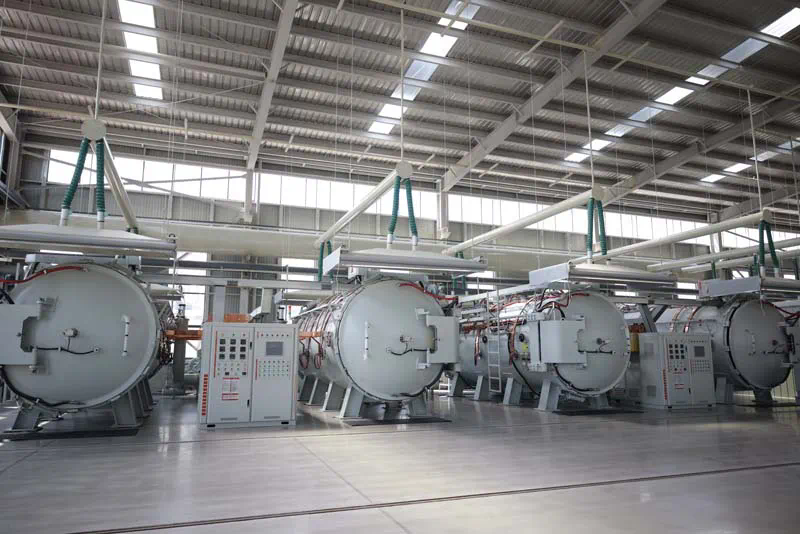How Does Filament 3D Printing Work?
To be able to print with FDM, a long piece of plastic filament must be fed from a spool to a nozzle. The plastic is liquefied here, dropped onto the platform, and then solidifies once more. One layer at a time, the nozzle moves precisely to place the material where it needs to be to build the model. The printer can start the next layer and continue building the model by lowering the platform by one layer's thickness after each layer is deposited.
What Are the Advantages of Filament 3D Printing?
Fused Deposition Modeling (FDM), another name for filament 3D printing, has several benefits, including:
- Versatility: A variety of materials, such as ABS, PLA, PETG, nylon, and others, can be used with FDM printers.
- Accessibility: FDM printers are user-friendly and appropriate for both professionals and hobbyists.
- Build Volume: Depending on the printer's size, FDM printers are capable of producing large objects.
- Durability: Objects created using FDM printing are strong and resistant to mechanical stress.
What Are the Disadvantages of Filament 3D Printing?
Some disadvantages of filament 3D printing include:
- Layer Lines: The layer lines that are present on objects printed with filament 3D printing can be visible. This can detract from the overall appearance of the product.
- Slow Printing Speed: Compared to other 3D printing methods, filament 3D printing can be slower, especially when printing intricate designs or larger objects.
- Warping: Filament 3D printing can be susceptible to warping, particularly when printing with certain types of materials or in certain conditions.
- Support Structures: Depending on the design, filament 3D printing may require support structures to be printed alongside the object, which can add to the overall printing time and require additional post-processing to remove.
What Software Is Used for Filament 3D Printer?
A filament 3D printer uses slicer software. Using a 3D model as a starting point, slicer software generates a toolpath that the printer can follow layer by layer. Simplify3D, PrusaSlicer, and Cura are a few examples of slicer software. Users of these software programs can alter settings like layer height, infill density, and print speed to get the outcomes they want.
Is Filament 3D Printing Cheaper Than Resin 3D Printing?
Yes, filament 3D printing is generally cheaper than resin 3D printing due to the lower cost of purchasing filament compared to resin. Resin can cost between $15 and $80 for 500 ml to 1 liter, while a 1 kg spool of PLA, ABS, or PETG filament typically costs around $20. Resin printing also entails extra expenses, such as replacing the resin tank, buying isopropyl alcohol, safety gear, and a UV curing lamp, which can add up and make resin printing more expensive over time.
Is Filament Stronger Than Resin 3D Prints?
Yes, generally speaking, filaments used for FDM 3D printing are more durable than regular resins used for resin 3D printing. This is because materials like ABS, PLA, PETG, nylon, and polycarbonate—which are often employed in FDM printing—have higher tensile strengths and impact resistance. The exception to this is tough resin, which is stronger than PETG, ABS, and nylon. For more information, see our guide on What is the Strongest 3D Printer Filament?
Which Are Faster—Resin 3D Printers or Filament 3D Printers?
SLA resin printing usually runs slower than FDM due to the small surface area of the lasers used. Projector and LCD-based printing, on the other hand, can be quicker than FDM because they can cure entire layers at once. Giving a clear-cut answer as to which method is faster is challenging because the speed of each method depends on some variables, including the settings, materials, and build heights used. The intended use case should ultimately guide the decision rather than speed alone when deciding between resin and FDM.
Which Resin 3D Printer and Filament 3D Printer Has The Smoothest Surface?
Compared to filament 3D printers, resin 3D printers are known for their smoother surfaces. This is because resin printing can produce images with a high degree of detail and resolution. Resin printers produce incredibly fine details and smooth surfaces by curing a liquid photopolymer with light. In contrast, filament printers construct the model layer by layer by extruding melted plastic, which can lead to a slightly rougher surface finish.
Which Resin 3D Printer and Filament 3D Printer is Most Cost Effective?
In most cases, filament 3D printers are more economical than resin 3D printers because they can use a wider variety of filaments and have less expensive materials. Specialized liquid photopolymers are necessary for resin printing, and the post-processing procedures usually call for additional tools and materials. Additionally, compared to filament printers, resin printers typically have a higher upfront cost.
Which Resin 3D Printer and Filament 3D Printer has the Strongest Prints?
The prints made by filament 3D printers are typically thought to be more durable than those made by resin 3D printers. This is because a variety of thermoplastics, including ABS and PETG, which have excellent strength characteristics, can be used with filament printers. On the other hand, photopolymer resins, which can be delicate and have low impact resistance, are typically used in resin printers. Despite this, resin printing is preferred for creating intricate and highly detailed models that might be difficult to create using filament printers.
Which Resin 3D Printer and Filament 3D Printer is the Best Starter 3D Printer?
The user's preferences and the printer's intended use will determine which 3D printer is the best entry-level model. The recommendation is to start with a filament 3D printer due to its lower cost and simplicity of use if deciding between a resin 3D printer and a filament 3D printer. The Original Prusa MK3S+ offers a more luxurious experience for those willing to spend more money, while the Creality Ender-3 V2 and Voxelab Aquila are both great low-cost options. The Elegoo Mars 3 is a reliable option with high-resolution and user-friendly features for resin printing. For more information, see our guide on Best Cheap 3D Printer.
Can I Use a Resin 3D Printer without Failing Halfway?
Yes, you can use a resin 3D printer without failing halfway if you follow the proper procedures and safety measures. Proper resin handling, calibration, and maintenance are required for resin 3D printing, as well as the appropriate safety equipment. Failures during the printing process can also be avoided by employing high-quality resins, ensuring that they are compatible with your printer, and avoiding excessive UV exposure.
Can I Reuse Filaments?
Yes, it is possible to reuse filaments for 3D printing, and doing so is a fantastic way to cut down on plastic waste. Recycled filaments are equally as good as or even better than regular filaments in terms of quality. They are also more readily available and less expensive. Additionally, recycled filaments are available in a wide range of substances, such as recycled PETG, PLA, and ABS, as well as in unusual hues and novel substances. Some businesses even provide a recycling service whereby clients can send their 3D printing scraps and receive credits for new filament purchases. In all, using recycled filaments for 3D printing is a sustainable and economical option.
Can I Use Filament on a Resin 3D Printer?
No, a resin 3D printer cannot use filament. Contrary to filament 3D printers, which build objects layer by layer using melted plastic filament, resin 3D printers use liquid photopolymer resin that solidifies when exposed to UV light. There is no compatibility between the two categories of printers.
Summary
This article presented resin vs. filament 3D printing, explained each of them, and discussed their various applications and how to pick the best process for you. To learn more about 3D printing processes, contact a Xometry representative.
Xometry provides a wide range of manufacturing capabilities, including 3D printing and other value-added services for all of your prototyping and production needs. Visit our website to learn more or to request a free, no-obligation quote.
Copyright and Trademark Notices
- Autodesk® is a registered trademark of Autodesk, Inc., and/or its subsidiaries and/or affiliates, in the United States.
Disclaimer
The content appearing on this webpage is for informational purposes only. Xometry makes no representation or warranty of any kind, be it expressed or implied, as to the accuracy, completeness, or validity of the information. Any performance parameters, geometric tolerances, specific design features, quality and types of materials, or processes should not be inferred to represent what will be delivered by third-party suppliers or manufacturers through Xometry’s network. Buyers seeking quotes for parts are responsible for defining the specific requirements for those parts. Please refer to our terms and conditions for more information.
.webp)



